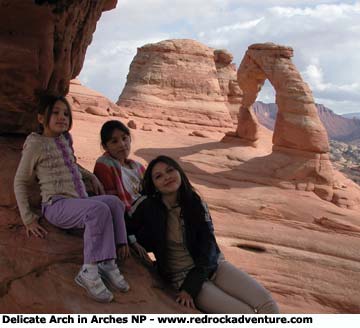 An AP news article about the sale of oil and gas leases near Utah national parks is being widely published, and is causing a bit of uproar. The sale is controversial and should be examined. Unfortunately, the AP article includes several misstatements, some so distorted they reek of sensationalism.
An AP news article about the sale of oil and gas leases near Utah national parks is being widely published, and is causing a bit of uproar. The sale is controversial and should be examined. Unfortunately, the AP article includes several misstatements, some so distorted they reek of sensationalism.Here's the full article. Below are excerpts, with my comments.
"The view of Delicate Arch natural bridge — an unspoiled landmark so iconic it's on Utah's license plates — could one day include a drilling platform under a proposal that environmentalists call a Bush administration "fire sale" for the oil and gas industry."
Delicate Arch is a natural arch, not a bridge. It is extremely unlikely that any present or future lease will result in a view of Delicate Arch that includes a drilling rig. The land features in that area make such a view virtually impossible. The claim is sensationalism. However, other arches on the edge of the park may be within visual range of potential drill sites.
"Late on Election Day, the U.S. Bureau of Land Management announced a Dec. 19 auction of more than 50,000 acres of oil and gas parcels alongside or within view of Arches National Park and two other redrock national parks in Utah: Dinosaur and Canyonlands."
Dinosaur is a national monument, not a park, and it is not in redrock country. It is located in NE Utah.
Virtually everyone agrees we should not allow drilling around the famous icons managed by the National Park Service. But Arches, Canyonlands and Dinosaur include thousands of acres of remote, seldom-visited backcountry. Here's a related question that deserves to be debated: Do we need to prevent development of land that is close to or within visual range of remote, seldom-visited areas within national parks and monuments?
The New York Times ran this story about the scheduled sales. The Times story does not include sensational claims or gross misstatements. But the tones of both articles make it seem like neither reporter has ever even seen the lands they are writing about.
Below is an excerpt from the Times article:
"The inclusion of the new lease tracts angered environmental groups, which were already critical of the bureau’s original lease proposal, made public this fall, because they said it could lead to industrial activity in empty areas of the state, some prized for their sweeping vistas, like Desolation Canyon, and others for their ancient petroglyphs, like Nine Mile Canyon."
Desolation Canyon is a deep gorge carved by the Green River in central Utah. River rafters enjoy floating the mild whitewater in the gorge, and enjoy the wilderness-like setting there.
The proposed leases are high on the plateau above the gorge and would not be within view from the river. The plateau above the gorge includes a huge amount of land that sees very few humans, aside from a small number of ranchers who run cattle there. It is not a popular area for recreation - there is very little backpacking, hiking and camping activity there.
A few rough roads provide access to the plateau. If the roads were improved, perhaps more people would visit and enjoy the area. Should an oil or gas well be located there, some roads would have to be improved.
Here are questions: Do we protect this area that is "prized for its sweeping vistas" by preventing all development, thus insuring it will remain virtually unused by humans? Or do we allow limited development, including improved road access, and thus open the door for recreational use?
Nine Mile Canyon is another story. There are several existing oil and gas wells in the area, some right in the canyon. The proposed leases are on land above the canyon - not even close to the ancient petroglyphs. Do we need to protect petroglyphs, which are adjacent to existing wells, by preventing future wells on land above the canyon?
These are weighty questions that have been debated for years. Most of the articles written in opposition to development are penned by people who have never seen these areas - who have no idea how big, remote and rugged this country is. They would write better articles if they would come see the land for themselves.
Ultimately, the public needs to decide what land to protect and what land to develop. It is public land. Come see it. Walk the deep canyons and visit the arches and petroglyphs. Then perhaps you can answer my questions.
Watch my Nine Mile Canyon video for more on this subject.
- Dave Webb

No comments:
Post a Comment